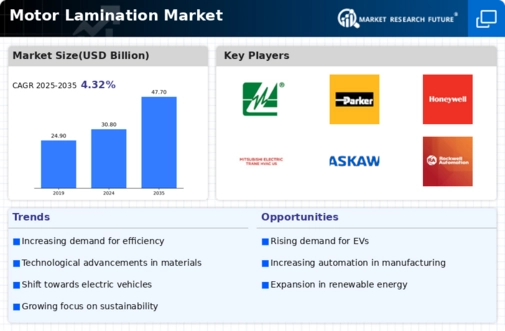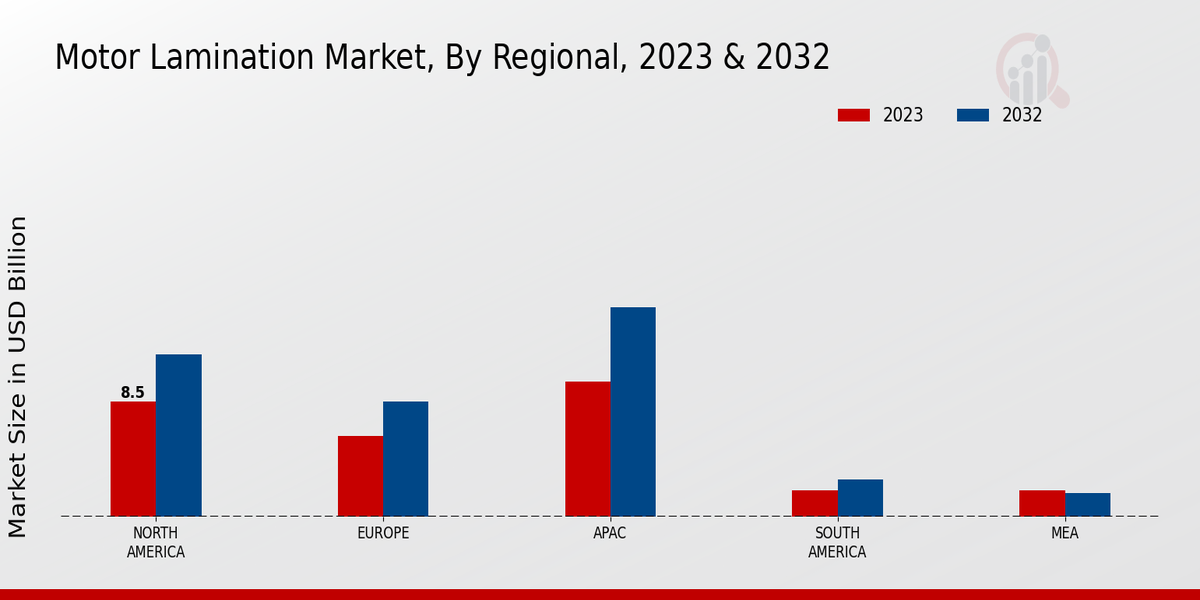Market Trends and Projections
Growth in Industrial Automation
The ongoing trend of industrial automation is a key driver of the Global Motor Lamination Market Industry. As industries adopt automated processes to enhance productivity and efficiency, the demand for electric motors increases. These motors often require specialized laminations to optimize performance and reduce energy consumption. The rise of smart factories and Industry 4.0 initiatives further accelerates this trend, as advanced motor technologies become integral to automated systems. Consequently, the market is poised for growth, with projections indicating a potential increase in demand for motor laminations in various industrial applications.
Rising Demand for Electric Vehicles
The increasing global emphasis on sustainability and reducing carbon emissions drives the demand for electric vehicles, which in turn fuels the Global Motor Lamination Market Industry. As electric vehicles require efficient motors, the need for high-quality motor laminations becomes paramount. In 2024, the market is projected to reach 30.8 USD Billion, reflecting the growing adoption of electric vehicles. This trend is expected to continue, with the market potentially reaching 47.7 USD Billion by 2035, indicating a robust growth trajectory. The shift towards electric mobility necessitates advanced motor technologies, thereby enhancing the demand for specialized motor laminations.
Expansion of Renewable Energy Sector
The global shift towards renewable energy sources significantly impacts the Global Motor Lamination Market Industry. As wind and solar energy installations proliferate, the demand for efficient motors in generators and other applications rises. This trend is particularly evident in the wind energy sector, where high-performance motors are essential for turbine operation. The increasing investment in renewable energy infrastructure is likely to bolster the market, as efficient motor laminations are crucial for optimizing energy conversion. The industry's growth aligns with global sustainability goals, further emphasizing the importance of motor laminations in renewable energy applications.
Increased Focus on Energy Efficiency
The global push for energy efficiency across various sectors significantly influences the Global Motor Lamination Market Industry. Governments and organizations are implementing stringent regulations aimed at reducing energy consumption and enhancing the efficiency of electric motors. This regulatory environment encourages manufacturers to invest in high-quality motor laminations that minimize energy losses. As a result, the market is expected to benefit from the heightened focus on energy-efficient solutions. The ongoing transition towards more sustainable practices across industries underscores the importance of motor laminations in achieving energy efficiency goals.
Technological Advancements in Motor Design
Innovations in motor design and manufacturing processes are pivotal in shaping the Global Motor Lamination Market Industry. The introduction of advanced materials and techniques, such as improved silicon steel laminations and innovative manufacturing methods, enhances motor efficiency and performance. These advancements not only reduce energy losses but also contribute to the overall performance of electric motors. As industries increasingly adopt these technologies, the market is likely to experience a compound annual growth rate of 4.06% from 2025 to 2035. This growth is indicative of the industry's response to the need for more efficient and durable motor solutions.













